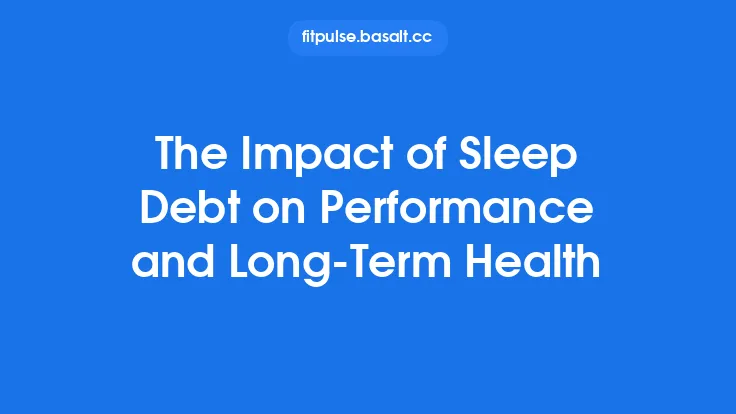Aging is an inevitable biological process that brings about a cascade of physiological adjustments, many of which directly influence how the body produces and utilizes energy. While the fundamental mechanisms of metabolism remain constant throughout life, the rate at which energy is expended at rest and during activity—known respectively as resting metabolic rate (RMR) and exercise capacity—tends to shift as we grow older. Understanding these shifts is essential for anyone interested in maintaining health, performance, or simply a high quality of life across the decades.
Age‑Related Changes in Resting Metabolic Rate
Resting metabolic rate represents the amount of energy the body requires to sustain basic physiological functions while at rest, such as circulation, respiration, and cellular maintenance. RMR accounts for roughly 60‑75 % of total daily energy expenditure in most adults. Several age‑linked factors contribute to the gradual decline in RMR observed after the third decade of life:
- Loss of Fat‑Free Mass (FFM) – Skeletal muscle is metabolically active tissue; each kilogram of muscle consumes more oxygen and calories at rest than an equivalent kilogram of adipose tissue. Sarcopenia, the age‑related loss of muscle mass, typically begins in the fourth decade and accelerates after age 60, reducing the overall metabolic “engine” of the body.
- Alterations in Organ Metabolic Activity – The metabolic rate of vital organs (brain, liver, kidneys, heart) declines modestly with age. For example, hepatic oxygen consumption can drop by 10‑15 % in older adults, contributing to a lower basal energy demand.
- Hormonal Shifts – Thyroid hormone (T3/T4) levels tend to decrease modestly with age, leading to a slower basal metabolic pace. Likewise, reductions in circulating growth hormone and insulin‑like growth factor‑1 (IGF‑1) diminish protein synthesis rates, indirectly influencing RMR.
- Reduced Sympathetic Nervous System Tone – The sympathetic drive that stimulates thermogenesis and basal energy turnover wanes with age, further curbing RMR.
Collectively, these mechanisms result in an average RMR decline of approximately 1‑2 % per decade after age 30, though individual trajectories vary widely based on genetics, lifestyle, and health status.
Body Composition Shifts Across the Lifespan
The composition of the body—how much of it is muscle, fat, bone, and water—undergoes predictable transformations with age:
- Muscle Mass – As noted, muscle mass peaks in the late 20s to early 30s and then declines. The rate of loss can be as high as 0.5‑1 % per year after age 60 if no countermeasures are taken.
- Fat Mass – Total body fat tends to increase, particularly visceral adipose tissue (VAT) surrounding internal organs. VAT is metabolically active and contributes to systemic inflammation, insulin resistance, and altered lipid metabolism.
- Bone Density – Bone mineral density (BMD) peaks around age 30 and gradually declines, especially in post‑menopausal women, affecting overall body weight and mechanical loading on muscles.
- Total Body Water – Intracellular water content diminishes with age, reflecting reduced muscle cell volume and contributing to a lower overall body mass.
These compositional changes not only affect RMR but also influence the mechanical efficiency of movement, joint loading, and the capacity to generate force during exercise.
Cardiovascular and Pulmonary Adaptations with Age
The heart and lungs are central to delivering oxygen and nutrients to working muscles. Age‑related modifications in these systems shape exercise capacity:
- Cardiac Output – Maximal cardiac output (the product of stroke volume and heart rate) declines by roughly 0.5‑1 % per year after the fifth decade. The reduction is primarily due to a lower maximal heart rate (chronotropic incompetence) and a modest decrease in stroke volume.
- Arterial Stiffness – Elastic arteries lose compliance, leading to higher systolic blood pressure and increased afterload on the heart. This can limit the heart’s ability to augment output during intense activity.
- Pulmonary Diffusing Capacity – The alveolar–capillary membrane thickens with age, slightly reducing the efficiency of oxygen transfer from the lungs to the blood. While resting oxygenation remains adequate, maximal aerobic performance can be compromised.
- Ventilatory Response – The ventilatory threshold (the point at which breathing rate rises disproportionately to workload) occurs at a lower absolute workload in older adults, reflecting a reduced capacity to sustain high‑intensity effort.
These cardiovascular and respiratory changes do not occur in isolation; they interact with muscular and metabolic alterations to shape overall exercise tolerance.
Neuromuscular Factors Influencing Exercise Capacity
Beyond the heart and lungs, the nervous system’s ability to recruit and coordinate muscle fibers is pivotal for performance:
- Motor Unit Remodeling – With age, there is a loss of motor neurons, especially those innervating fast‑twitch fibers. Surviving neurons may re‑innervate denervated fibers, leading to a shift toward a higher proportion of slower, more fatigue‑resistant motor units.
- Slower Conduction Velocity – Myelination of peripheral nerves diminishes, resulting in slower nerve impulse transmission. This can affect reaction time, coordination, and the rapid generation of force.
- Reduced Proprioceptive Sensitivity – Declines in joint mechanoreceptor function impair balance and fine motor control, increasing the risk of injury during dynamic activities.
- Altered Excitation–Contraction Coupling – Age‑related changes in calcium handling within muscle cells can blunt the speed and magnitude of contraction, reducing power output.
These neuromuscular adaptations contribute to the observed decrease in maximal strength, power, and agility seen in older populations.
Hormonal Landscape of Aging and Metabolism
While the article avoids deep discussion of exercise‑induced hormonal responses, it is still relevant to outline the baseline hormonal milieu that underpins metabolic rate and exercise capacity:
- Thyroid Hormones – Slight reductions in circulating T3/T4 lower basal thermogenesis and influence lipid oxidation rates.
- Sex Steroids – Testosterone levels in men and estrogen levels in women decline with age, affecting muscle protein synthesis, bone health, and fat distribution. The net effect is a propensity toward sarcopenia and increased adiposity.
- Insulin Sensitivity – Age is associated with a gradual decline in insulin sensitivity, which can impair glucose uptake by muscle cells during both rest and activity, shifting reliance toward alternative fuel pathways.
- Cortisol – Basal cortisol may rise modestly, promoting catabolism of protein and contributing to muscle loss if not counterbalanced by adequate nutrition and resistance training.
Understanding these hormonal trends helps explain why metabolic efficiency and exercise performance tend to wane unless proactive interventions are employed.
Practical Strategies to Preserve Metabolic Health
Given the inevitability of age‑related physiological changes, targeted lifestyle modifications can attenuate their impact:
- Resistance Training – Engaging in regular, progressive resistance exercise (2‑4 sessions per week) is the most effective stimulus for preserving or even increasing FFM, thereby sustaining RMR. Emphasis on compound movements (e.g., squats, deadlifts, presses) maximizes muscle recruitment.
- Aerobic Conditioning – Moderate‑intensity continuous activity (e.g., brisk walking, cycling) supports cardiovascular health, improves stroke volume, and enhances mitochondrial density, indirectly supporting metabolic rate.
- Protein Nutrition – Consuming 1.2‑1.6 g·kg⁻¹·day⁻¹ of high‑quality protein, distributed evenly across meals, provides the amino acids necessary for muscle protein synthesis, especially important in the context of anabolic resistance that accompanies aging.
- Adequate Micronutrients – Ensuring sufficient intake of vitamin D, calcium, magnesium, and B‑vitamins supports bone health, neuromuscular function, and enzymatic processes involved in metabolism.
- Sleep Hygiene – Quality sleep (7‑9 hours per night) regulates hormonal balance (e.g., growth hormone, cortisol) and facilitates recovery, both of which influence metabolic rate.
- Stress Management – Chronic psychosocial stress elevates cortisol, which can accelerate protein catabolism and fat accumulation. Mind‑body practices (e.g., meditation, yoga) can mitigate this effect.
- Hydration – Maintaining optimal fluid balance supports thermoregulation, cardiovascular function, and metabolic reactions.
Implementing these strategies consistently can blunt the typical decline in RMR and preserve functional capacity well into later decades.
Designing Age‑Appropriate Exercise Programs
When constructing a training regimen for older adults, several principles should guide program design:
- Progressive Overload with Adequate Recovery – Incrementally increase load, volume, or intensity while allowing sufficient rest days to avoid overtraining and injury.
- Balanced Modality Mix – Combine resistance work (2‑3 days) with aerobic sessions (2‑3 days) and flexibility/balance training (daily or at least 3 times per week). This holistic approach addresses muscular, cardiovascular, and neuromotor domains.
- Emphasis on Functional Movements – Prioritize exercises that mimic daily activities (e.g., sit‑to‑stand, step‑ups, carrying loads) to improve real‑world performance and reduce fall risk.
- Periodization – Cycle through phases of higher volume/lower intensity and lower volume/higher intensity to stimulate adaptation while managing fatigue.
- Individualization – Account for health status, comorbidities, medication effects, and personal goals. For instance, individuals with osteoarthritis may benefit from low‑impact cardio (e.g., swimming) and joint‑friendly resistance modalities (e.g., resistance bands).
- Monitoring Intensity – Use perceived exertion scales (e.g., Borg RPE) or heart rate reserve calculations rather than absolute speed or load, as maximal capacities differ widely among older adults.
By adhering to these guidelines, practitioners can help clients maintain metabolic vigor and exercise capacity despite chronological aging.
Monitoring Progress and Adjusting Goals
Objective tracking is essential to gauge the effectiveness of interventions and to fine‑tune programs:
- Resting Metabolic Rate Measurements – Indirect calorimetry or validated predictive equations (adjusted for age, sex, and body composition) can reveal changes in basal energy expenditure over time.
- Body Composition Analysis – Dual‑energy X‑ray absorptiometry (DXA), bioelectrical impedance analysis (BIA), or skinfold assessments provide insight into muscle versus fat changes.
- Functional Tests – Timed up‑and‑go (TUG), 6‑minute walk test, and hand‑grip dynamometry are simple, reliable markers of functional capacity and can be repeated periodically.
- Cardiovascular Metrics – Resting heart rate, blood pressure, and submaximal exercise tests (e.g., step test) help monitor cardiovascular health.
- Subjective Feedback – Energy levels, sleep quality, and perceived exertion during daily activities are valuable qualitative data points.
When data indicate stagnation or regression, adjustments may include increasing resistance intensity, incorporating novel movement patterns, revisiting nutritional intake, or allowing additional recovery time.
Concluding Perspective
Age undeniably influences metabolic rate and exercise capacity through intertwined changes in muscle mass, organ function, cardiovascular dynamics, neuromuscular coordination, and hormonal balance. However, these trajectories are not immutable. By embracing evidence‑based training, nutrition, and lifestyle practices, individuals can substantially mitigate the metabolic slowdown and preserve functional performance well beyond the conventional expectations of aging. The key lies in proactive, personalized strategies that respect the physiological realities of older adulthood while leveraging the body’s remarkable capacity for adaptation.





